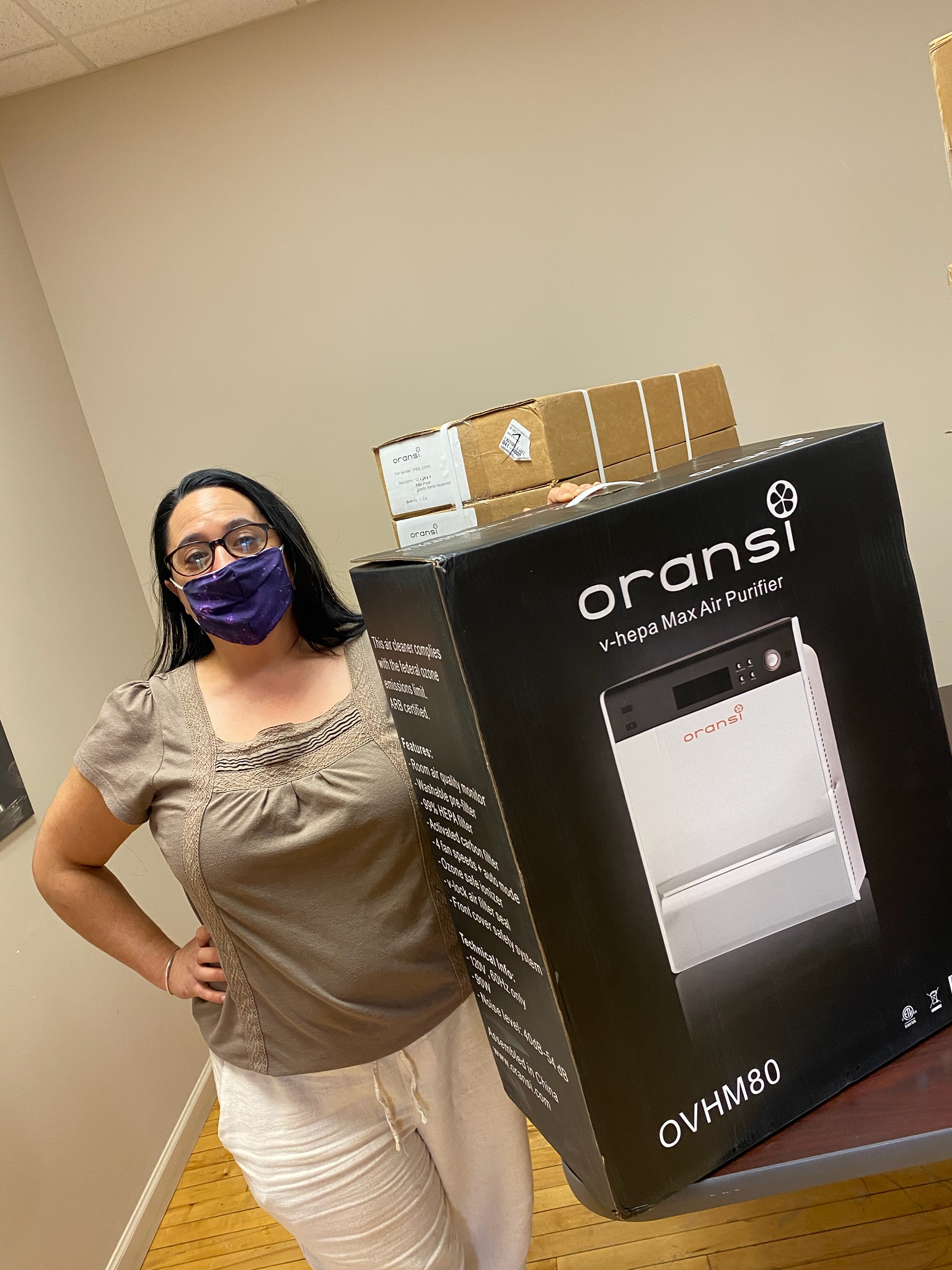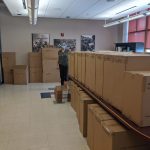
- A
- A
- A

Today, the Wall Street Journal posted an article on how indoor ventilation is critical to preventing the spread of COVID-19. This is based on a growing understanding that COVID-19 spreads through aerosols or tiny droplets containing the virus that circulate through the air. In addition to frequent handwashing, face masks, and social distancing many researchers believe that improving indoor air quality is not just critical, but necessary to reducing the spread of the virus.
Since the onset of the pandemic, CDR has been closely following COVID-19 research, guidelines, and recommendations from reputable sources. Two months ago we were already aware of this emerging information and began addressing the air quality in our offices. Although we are not a mall or shopping center, we read the ventilation requirements New York State had established for them. We also read the Center for Disease Control’s guidance for health care facilities. It was intimidating at first, but it needed to be done.
Our office density in Rochester remains extremely low for such a large building. We assumed that meant our air quality would be good, and were very pleased that this was validated through testing the level of carbon-dioxide in the building and comparing that to the exterior levels. (Yes, we bought a carbon dioxide meter.) According to the American Society of Heating, Refrigeration, and Air Conditioning Engineers (ASHRAE) Standard 62, offices should have 20 cfm of outside air per person which would be demonstrated by at least a CO2 differential of 500 ppm between the inside and outside air. Based on live testing at the end of the day – when CO2 levels in offices should be at their highest – our Rochester office only has an average differential of about 125 ppm.
Even though we already had good air quality, we arranged to upgrade our main HVAC systems to include better circulation, a greater level of air exchange, and in-line air disinfection. When we met with the professionals and talked about wanting to ensure we have the equivalent of 6 air exchanges per hour, they initially told us, “You aren’t a healthcare facility.” We acknowledged that we didn’t provide healthcare services per se, but said wanted to ensure we provided a safe environment for our staff and the elderly and disabled people who come to our offices.
In addition, we have purchased individual air purifiers with HEPA filters for all of our offices and work sites. The air purifiers we selected are very high quality and have a MERV rating between 16 -18. This refers to the filter’s ability to catch smaller particles in the air including viruses. For comparison, a MERV rating of 13-16 is considered hospital-quality air filtration. The air purifiers will be the primary approach to improving air quality and reducing the spread of viruses through aerosols in our Geneva and Corning offices where the air purifiers are being placed throughout the facilities.
Careful measurements were taken of each office to ensure we purchased the correct size and numbers of air purifiers for each space. We created a spreadshee t with formulas to ensure that we met our target. In the Geneva and Corning offices, large purifiers are being placed in the lobby areas, and smaller purifiers are being placed in each office and restrooms. In all three of our offices, air purifiers will be placed in common use spaces and any room which houses multiple staff or visitors.
t with formulas to ensure that we met our target. In the Geneva and Corning offices, large purifiers are being placed in the lobby areas, and smaller purifiers are being placed in each office and restrooms. In all three of our offices, air purifiers will be placed in common use spaces and any room which houses multiple staff or visitors.
 t with formulas to ensure that we met our target. In the Geneva and Corning offices, large purifiers are being placed in the lobby areas, and smaller purifiers are being placed in each office and restrooms. In all three of our offices, air purifiers will be placed in common use spaces and any room which houses multiple staff or visitors.
t with formulas to ensure that we met our target. In the Geneva and Corning offices, large purifiers are being placed in the lobby areas, and smaller purifiers are being placed in each office and restrooms. In all three of our offices, air purifiers will be placed in common use spaces and any room which houses multiple staff or visitors. Placement of these is important. Large purifiers sit on the floor while smaller filters will be placed on stands or attached to the wall. This will help make sure that air is being pulled up and circulated appropriately so that the purifiers don’t draw unpurified air toward any individual. Accessibility was also taken into serious account and the placement of purifiers that sit on the floor or on stands will not hinder the accessibility of each site to all staff and visitors.
We’re taking these steps and making the investment for the long-term. It is essential to protect all of us from COVID-19 as well as protecting us from any transmission of other airborne illnesses. We appreciate that our Board of Directors has supported this important initiative. We also appreciate Linda Taylor, our CEO’s Executive Assistant, who has been the point person managing a lot of these purchases and modifications.
We came to work at CDR because we were interested in helping Disabled people access services and fight for their rights. We never would have imagined that we would be talking about ventilation, HEPA filters, and air exchanges, but with COVID-19 that this is a critical component of our work.